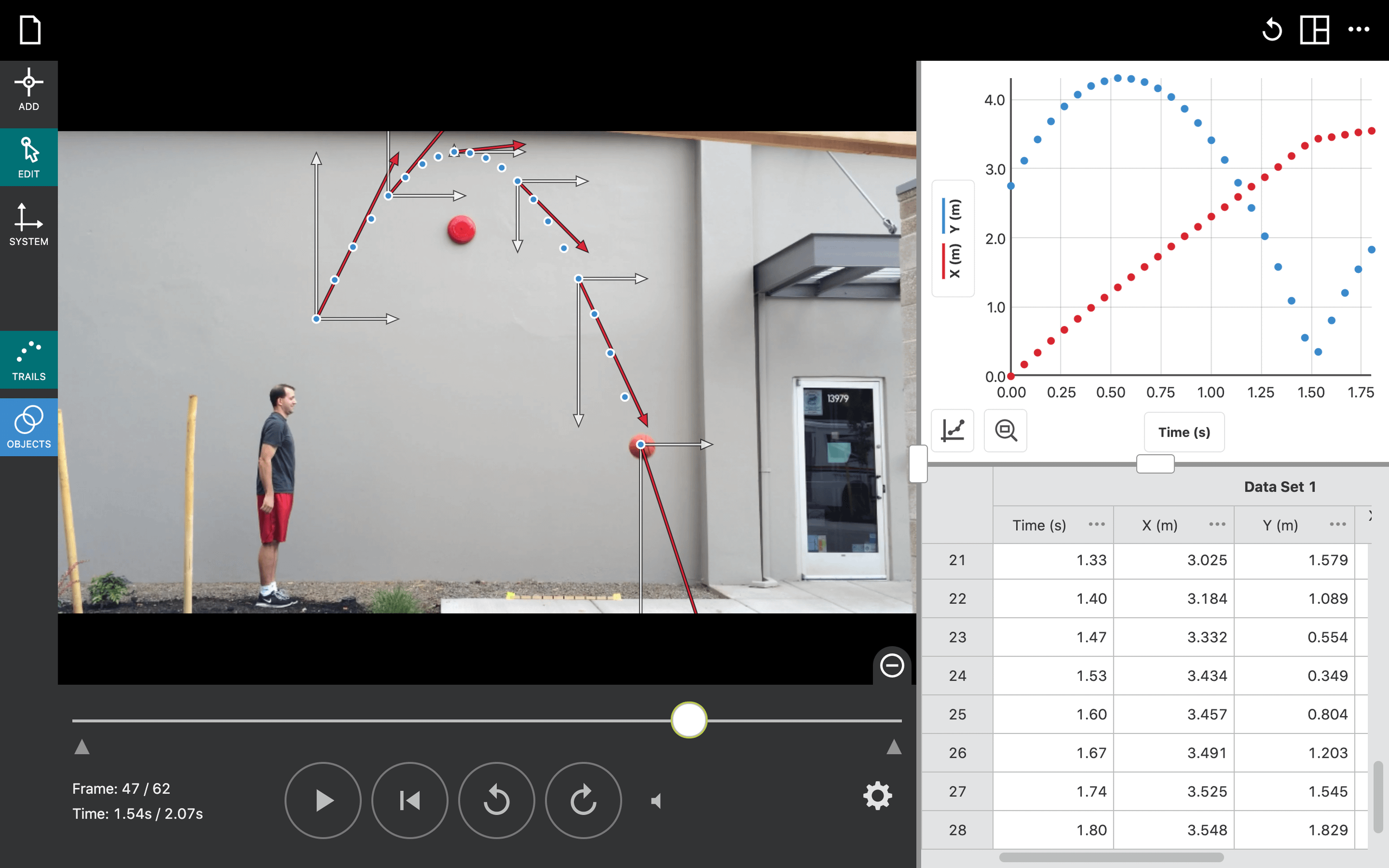Water Flow from a Tank: Parabolic Trajectory
Experiment #7 from Vernier Video Analysis: Conservation Laws and Forces
- Subject
- Physics
Introduction
Bernoulli’s principle is an energy conservation statement for fluid flow. For a steady flow, the sum total of all forms of energy—kinetic, potential, and internal—at each point along the flow must be the same. This means that when the fluid is flowing faster (greater kinetic energy) at one point than another, there must be a decrease in potential (e.g., gravitational) or internal energy.
Torricelli’s theorem is a special case of Bernoulli’s principle, relating the outflow velocity from a water tank to the pressure head of the fluid within the tank. The greater the pressure head (depth of the liquid), the faster the fluid flow.
Objectives
- Use video analysis techniques and projectile motion relationships to obtain velocity data for a stream of water.
- Use Bernoulli’s principle to derive Torricelli’s theorem.
- Predict the exit velocity of the stream of water and compare it to the measured velocity.
Sensors and Equipment
This experiment features the following sensors and equipment. Additional equipment may be required.
Ready to Experiment?
Ask an Expert
Get answers to your questions about how to teach this experiment with our support team.
- Call toll-free: 888-837-6437
- Chat with Us
- Email support@vernier.com
Purchase the Lab Book
This experiment is #7 of Vernier Video Analysis: Conservation Laws and Forces. The experiment in the book includes student instructions as well as instructor information for set up, helpful hints, and sample graphs and data.


